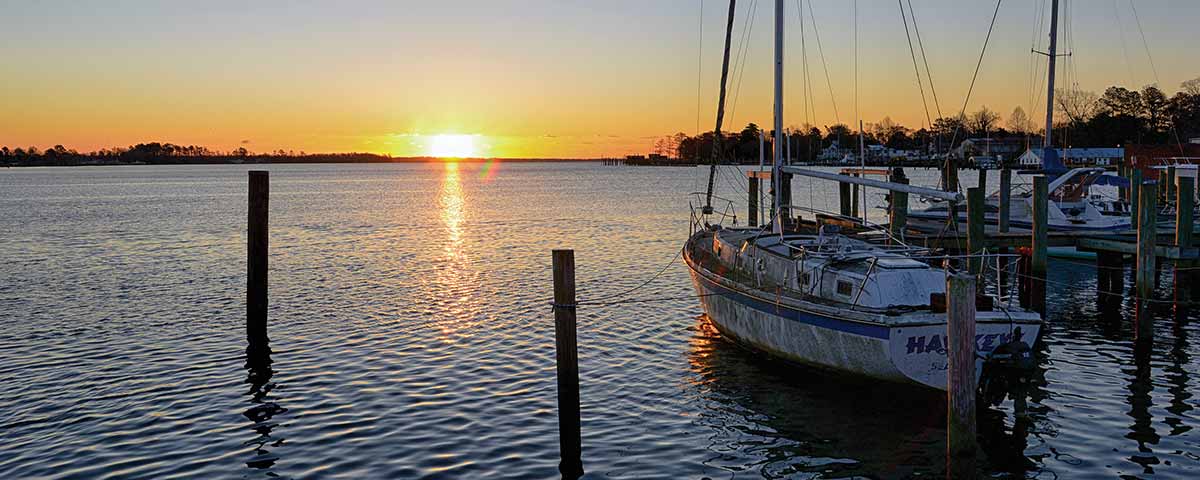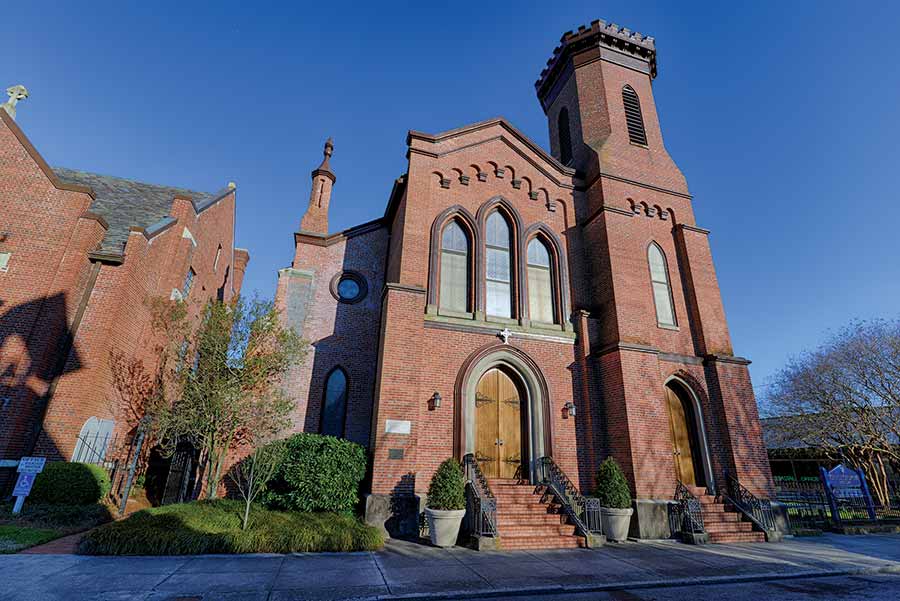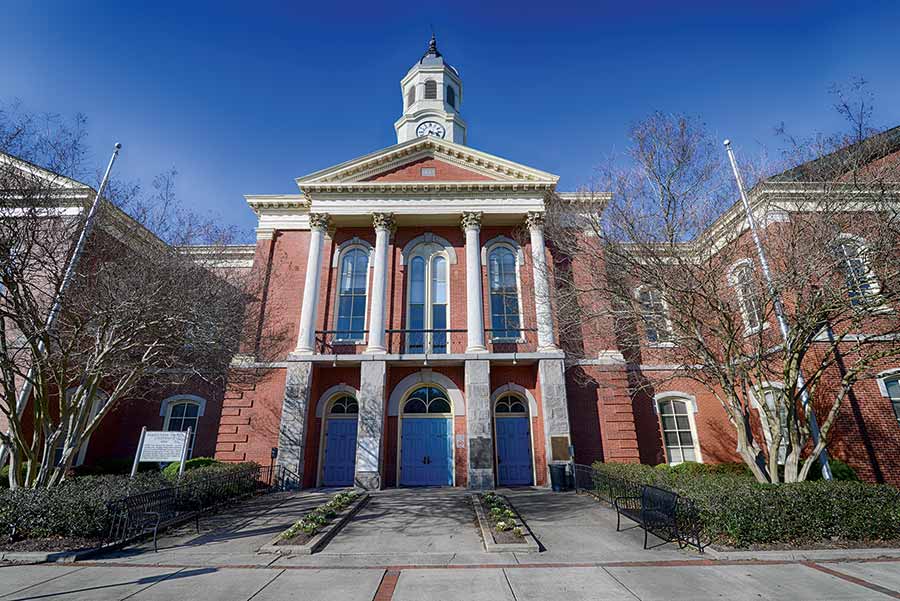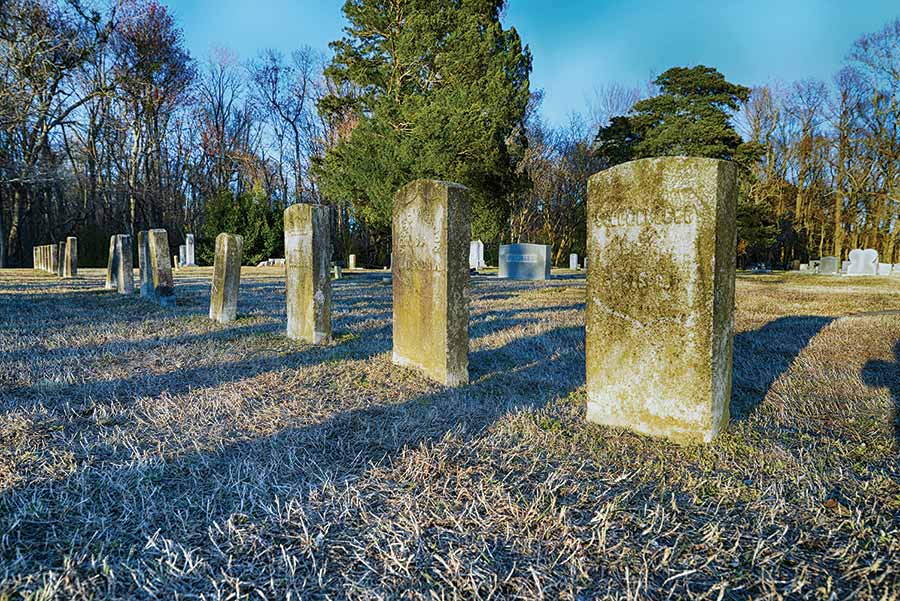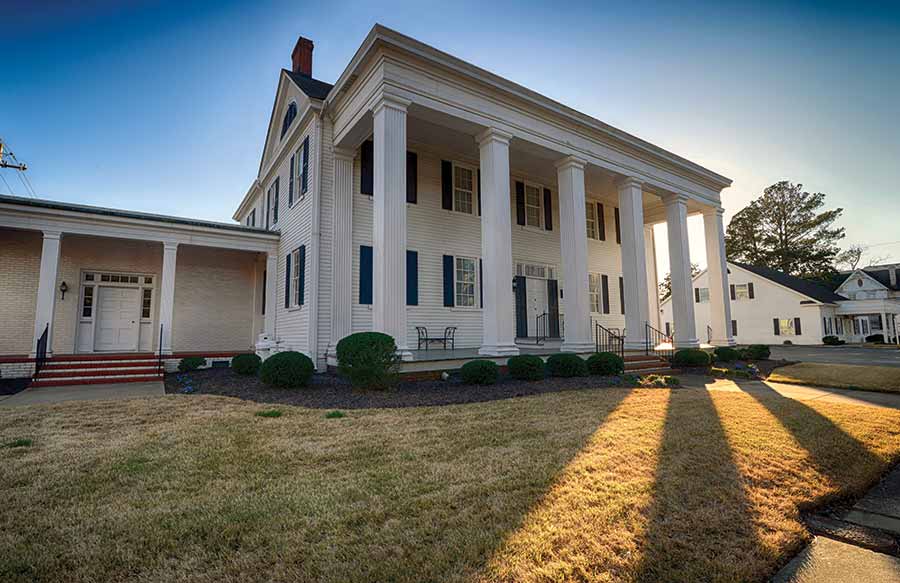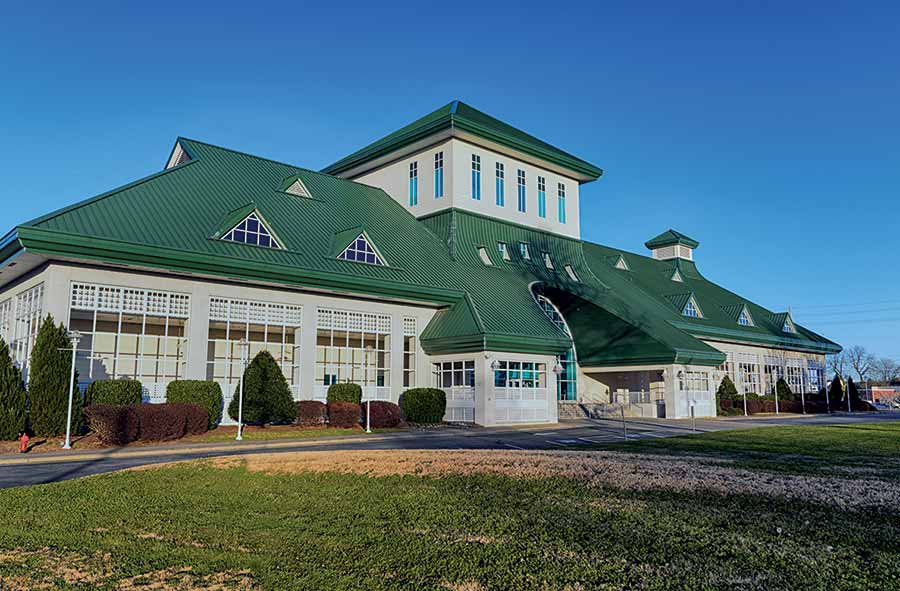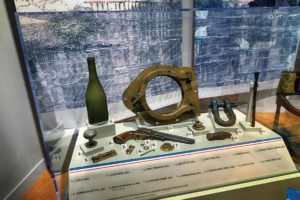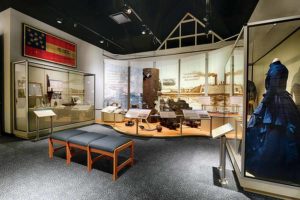Trailside is produced in partnership with Civil War Trails Inc., which connects visitors to lesser-known sites and allows them to follow in the footsteps of the great campaigns. Civil War Trails has to date 1,552 sites across five states and produces more than a dozen maps. Visit civilwartrails.org and check in at your favorite sign #civilwartrails.
Control of coastal North Carolina was critical in the Civil War. The inlets and sounds behind the Outer Banks sheltered ships running the Union blockade. Elizabeth City, N.C., on the Pasquotank River, was at the southern terminus of the Dismal Swamp Canal, which offered ocean access at Norfolk, Va.
Although the city was not the target of a sustained campaign, it was frequently witness to military and guerrilla activity from early in the war to the end. On February 10, 1862, 14 Union gunboats steamed up Albemarle Sound to capture the town and block the Dismal Swamp Canal. In a brief confrontation, four of six defending gunboats in the Confederate “Mosquito Fleet” were sunk or captured.
The city was left all but deserted, and Virginia troops had burned the courthouse and several homes to deny their use to the Yankees. Lawlessness soon became rampant. Bushwhackers waylaid Federal patrols, and Union troops armed freed slaves and stripped Confederate sympathizers of livestock. On January 5, 1863, guerrillas ambushed a party of Union soldiers and civilians on Main Street, killing a Union lieutenant and a Northern sympathizer. One bushwhacker would be hanged in reprisal.
In August 1863, the 1st United States Colored Troops were briefly stationed in the town. That December, Union Brig. Gen. Edward A. Wild led a raid of eastern North Carolina with a force that included African-American detachments. And in March 1864, the Confederate ironclad Albemarle menaced Union strongholds in the region until sunk. For the rest of the war, Federal authority in eastern North Carolina remained essentially unchallenged. Not only did President Lincoln allow trade between Norfolk and the Albemarle region, but the U.S. Internal Revenue Service collected taxes.
Today, Elizabeth City is a charming destination along the Intracoastal Waterway that also offers boaters superb harbor facilities. Several wildlife refuges feature hiking, kayaking, and bird-watching. The Albemarle Sound resounds with the history of the Underground Railroad. —Nancy Tappan
Special thanks to Bruce Long and A.Christopher Meekins for their help with this guide.
Christ Episcopal Church
200 S. McMorrine St.
Rector Edward M. Forbes stayed behind during the Battle of Elizabeth City on February 10, 1862. Dressed in his clerical vestments, the Rev. Forbes met the Union commander at the waterfront and negotiated a peaceful surrender of the town to save it from destruction. christchurchecity.org
Pasquotank County Courthouse
206 E. Main St.
The courthouse was built in 1882 to replace the 1799 wood-frame courthouse Virginia troops burned during the Battle of Elizabeth City to prevent its use by Federals. A historical marker at the site recalls the heroics of livery stable owner Arthur Jones, who hid the courthouse records in a barn in the countryside. Jones died penniless and blind.
Oak Grove Cemetery
Peartree Road
A Grand Army of the Republic post was formed by former United States Colored Troops in the last quarter of 1885. Their post, the Fletcher GAR Post No. 20, purchased plots in Oak Grove Cemetery for the burials of former USCT soldiers and African-American sailors who served in the Union Navy.
Martin House
405 E. Church St.
The Martin family lived in the house currently occupied by Twiford’s Funeral Home. William Martin was the first doctor in Elizabeth City. His sons, Brig. Gen. James G. Martin and Colonel William F. Martin, served as officers in the Confederate Army. James Martin was adjutant general for the state of North Carolina at the outbreak of the war. The Martin family had a shipyard on Poindexter Creek where shipbuilder Gilbert Elliott was building a wooden gunboat for the Confederate “Mosquito Fleet” prior to the Battle of Elizabeth City. The ship was burned on the stocks to prevent its capture.
Grice-Fearing House
Bed & Breakfast
200 S. Road Street
The 1798 Grice-Fearing House is the oldest house in Elizabeth City and is on the National Register of Historic Places. The two-story front part of the house retains its Federal design. In 1861, homeowner John Bartlett Fearing, captain of Company I, 17th North Carolina Infantry, was captured at Hatteras Inlet and held as a prisoner of war. In 1863, he resigned his Confederate commission, took the Union Oath of Allegiance and paid Federal taxes. He died in 1888. gricefearinghouse.com
Civil War History captured here
The Museum of the Albemarle tells the story of Elizabeth City’s unique relationship with the sea, land, and rivers. Civil War artifacts on exhibit include the uniform frock coat and epaulets worn by Confederate Brig. Gen. James G. Martin; a Confederate First National Flag (one of three flags captured at the 1862 Battle of New Bern by the 21st and 25th Massachusetts), and the damaged smokestack from the ironclad CSS Albemarle. 501 S. Water St., across from Waterfront Park museumofthealbemarle.com
Muddy Waters
This coffeehouse overlooks the intersection where, on January 5, 1863, a party including Union Lieutenant Nathaniel Sanders and local Unionist Joseph T. McCabe were ambushed when guerrillas hidden in the ruins of the Nichols Hotel—current site of the Southern Hotel—fired on them. McCabe was killed instantly. Sanders managed to get back to Union headquarters on Shepard Street before dying from his wounds. The attack spurred Yankee reprisals, including the hanging of a captured guerrilla. 100 W. Main St. muddyscoffee.com

